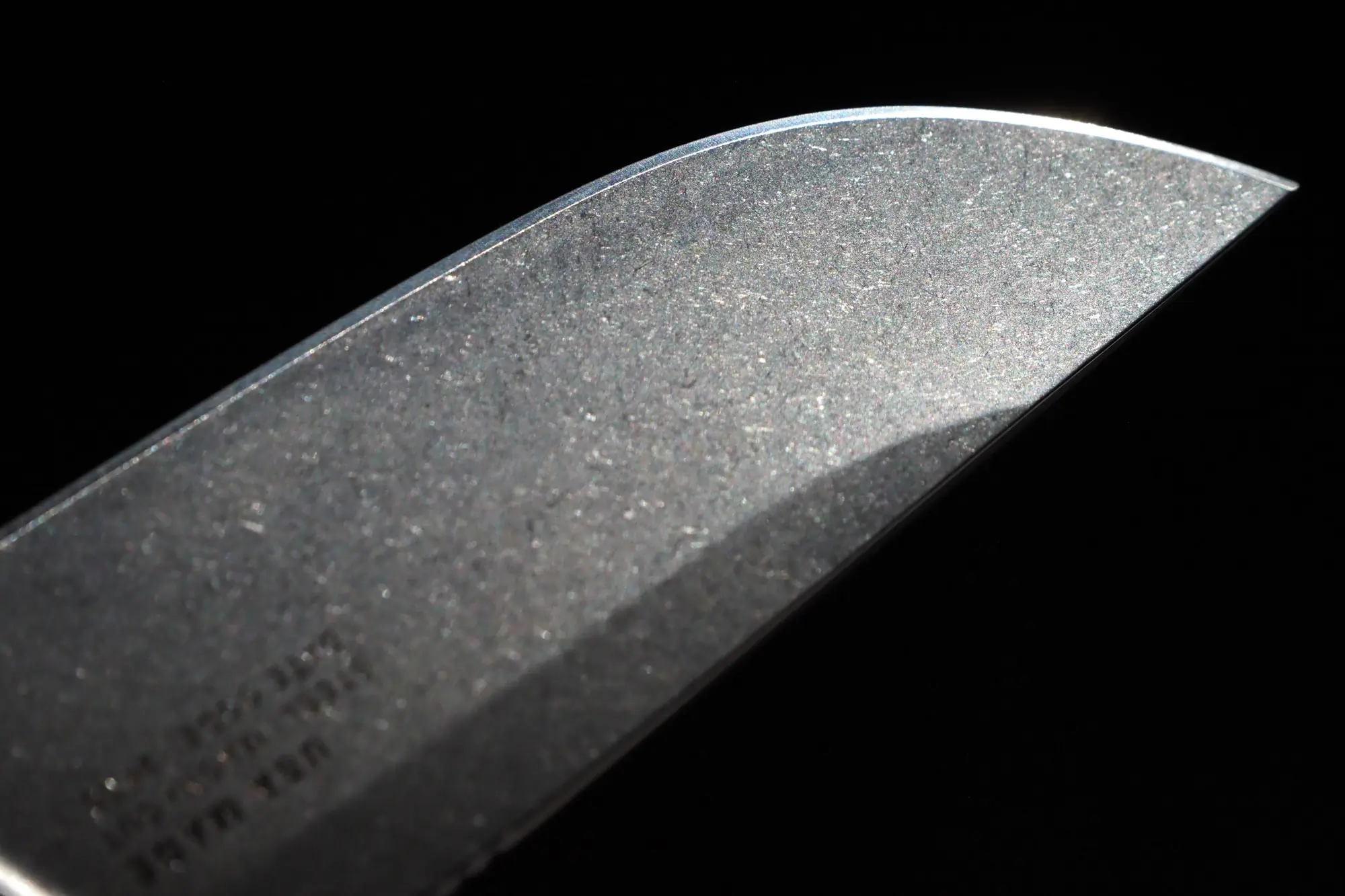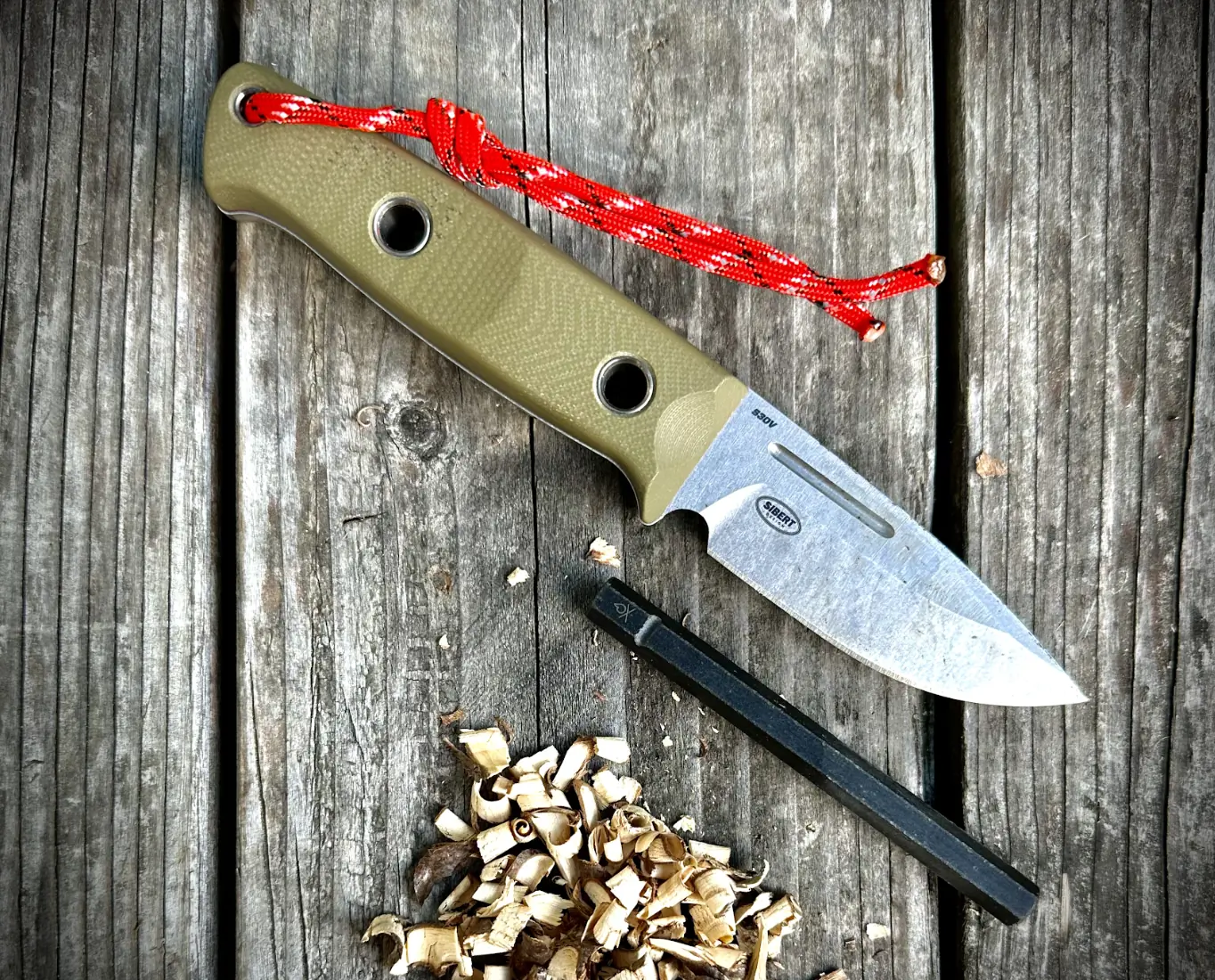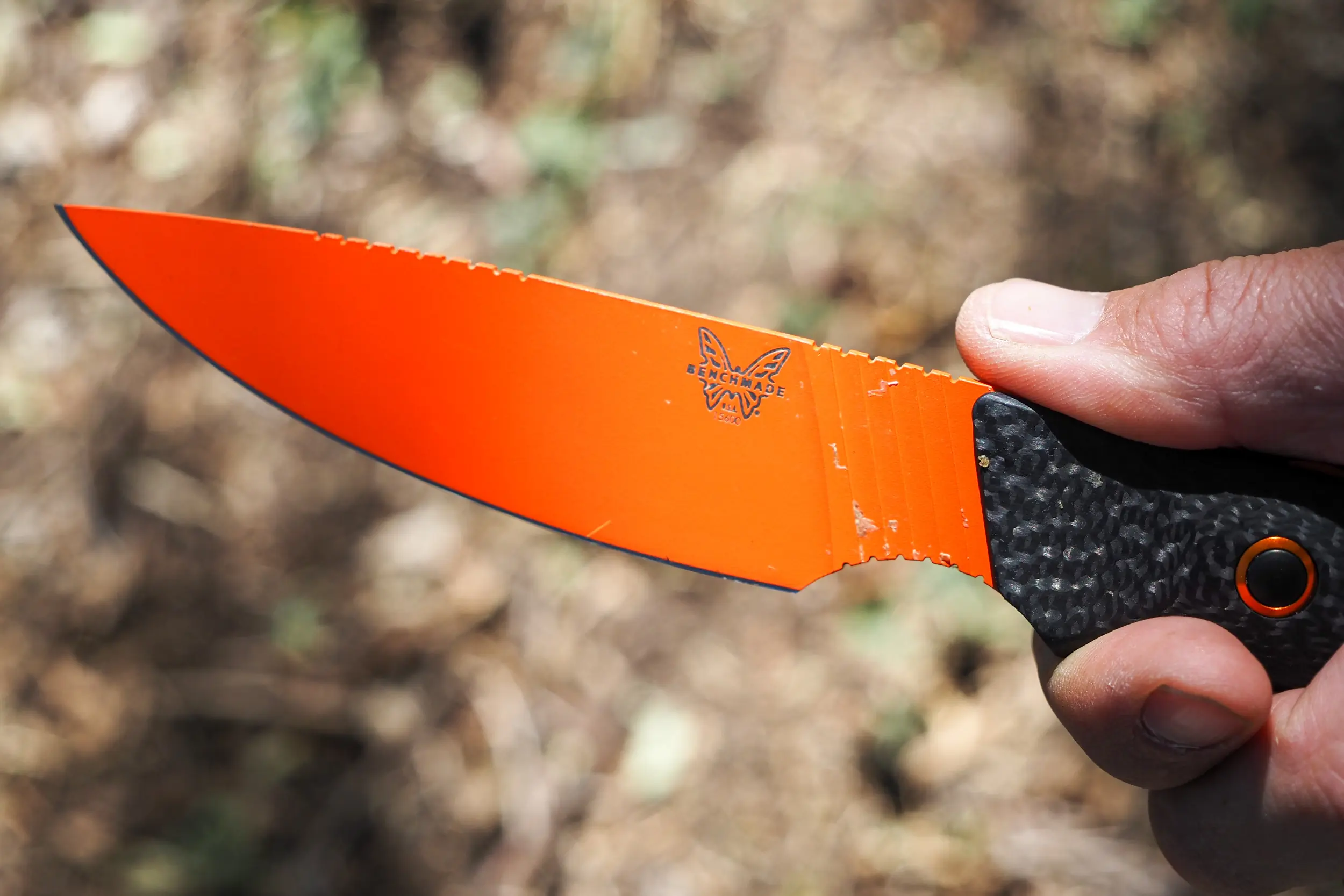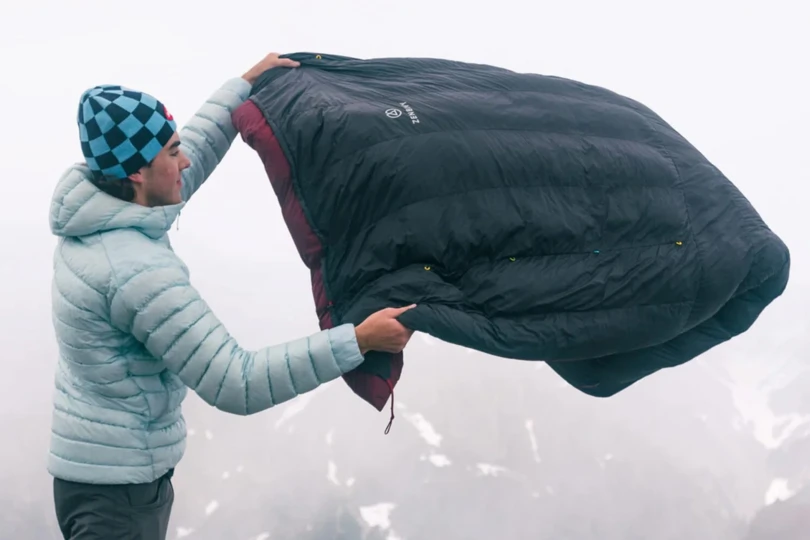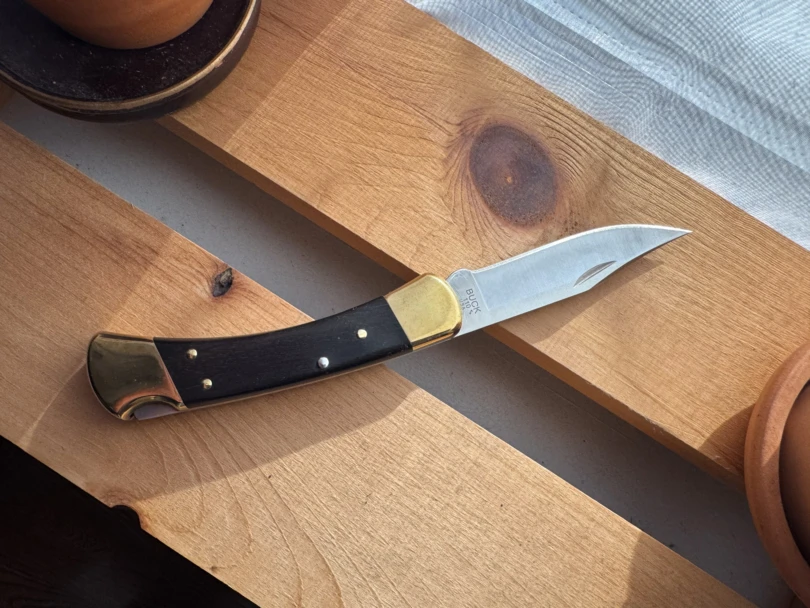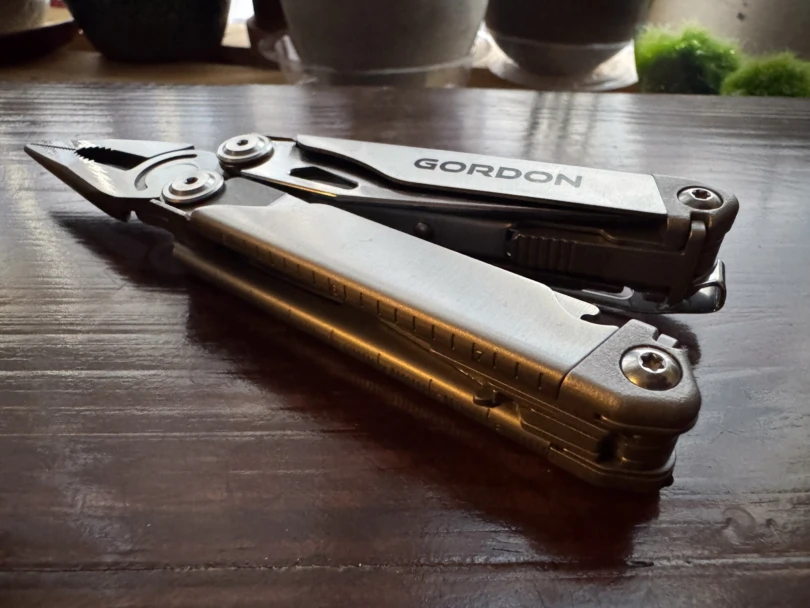There are dozens, if not hundreds, of knife steels available to knife makers. Fortunately, most knives are made from one of about 25 very popular knife steels. Here, we’ll break down many of the knife steels on the market using simple layman’s terminology.
So, if you’re curious about the steel in your knife, check out the list below for a breakdown of its pros, cons, and characteristics. But before we dive into specific knives, let’s consider a few definitions you should know.
Knife Steel Characteristics
Four main characteristics differentiate knife steels: corrosion resistance, edge retention, toughness, and ease of resharpening. I won’t go into detail about those here. But to learn more about these and other attributes, read our related buyer’s guides on outdoor knives and knife sharpeners.
In short:
- Corrosion resistance is relatively straightforward. It refers to a knife’s ability to resist rusting and other corrosive elements.
- Edge retention refers to how long a knife holds a sharp edge. Harder steels tend to dull more slowly but can also chip or deform.
- Toughness refers to a steel’s resistance to chipping or breaking. Tough knives are great for bushcraft or other hard use.
- Ease of resharpening means how easily you can get a nice edge back on a dull knife. Many modern super-steels that hold an edge for a very long time are also hard to resharpen.

Common Knife Steels: A Brief Summary
If you’re shopping for a knife and interested in the most basic facts about your potential knife steel, check the quick list below for a general outline of the most common steels used for knife blades. If you’d like to dive deeper, the second section of this article offers more insights into which knife steels are best for various tasks.
- Soft steel with low carbon content
- Relatively stain-resistant and tough, but doesn’t hold an edge well
- Easy to sharpen
- Old high-carbon (non-stainless) steel, known for toughness
- Prone to staining and corrosion, often coated
- Performance varies with heat treatment
- Common stainless steel, decent all-around
- Hard, tough, and stain-resistant
- Good choice for midrange knives
- Non-powder steel, slight upgrade to 440C/VG-10/ATS-34
- Good corrosion resistance, decent toughness, modest hardness
- Comparable to 440C and VG-10
- Not a specific steel but a forging technique using layers of different steels, resulting in unique patterns
- Performance: Varies depending on the steel used and heat treatment
- Best for: Aesthetic and collectible knives, as well as some functional blades
- High-end stainless Damascus steel, produced by a specific company, offers excellent performance and aesthetics
- Note: Expensive due to the manufacturing process
- Best for: Premium and custom knives for collectors and enthusiasts
8Cr13MoV (any of the CR series)
- Chinese-produced steels, 9Cr is top-tier
- 8Cr is less corrosion-resistant and not as hard as AUS-8
- Good value when ground appropriately
- Used in Swiss Army knives, excellent for beginners
- Very tough and corrosion-resistant, but doesn’t hold an edge well
- Easy to sharpen
- Widely used in nicer knives, good balance between hardness, toughness, and corrosion resistance
- Similar to RWL 34 and ATS-34
- Purer powder-metal version called CPM154 is available
- American-made powder steel, balanced attributes
- Hardened versions can be prone to chipping
- Chris Reeve’s version is slightly less hard and performs well
- Similar to S30V, but with a finer grain structure
- Slightly different chemical composition makes it tougher than S30V with similar edge retention
- Excellent steel used on a wide variety of quality knives.
- Powder-metal steel, very hard, exceptionally difficult to sharpen
- Holds an edge for a long time, resistant to corrosion, quite tough
- Found on some high-end hunting knives
- Powder-metal steel, high-hardness yet balanced
- Used in Spyderco and favored by custom makers
- Non-powder Japanese steel, corrosion-resistant, and tough
- Lacks hardness compared to some steels
- Midprice steel with matching performance
- Tool steel used in industrial settings and hard-use knives
- High hardness and toughness, relatively corrosion-resistant
- Not technically stainless, but resistant to corrosion
- Tool steel known for toughness, but lacks wear resistance
- Used for heavy-duty applications prioritizing toughness over edge retention
- European powder-metal steel, advanced formula
- Good all-around performance
- Considered a generation ahead of older formulations like 154CM
- Non-powder steel, a good budget option, similar to GIN-1
- Sharpens easily, used by CRKT and Spyderco
- Non-powder steel produced by Swedish steelmaker Uddeholm
- Exceptionally sharp, suitable for custom makers
- Nitrogen steel, enhanced version of AEB-L, corrosion-resistant
- Suitable for marine environments, budget-friendly
- Non-powder metallurgy steel produced by European company Sandvik
- Updates of previous steels, good balance of attributes for the price
- Powder steel produced by Carpenter, a combination of D2’s hardness and 440C’s corrosion resistance
- Exceptionally balanced with excellent all-around attributes
- Newer steel from Crucible, marketed as a good all-around knife steel
- User-serviceable powder steel, introduced by Spyderco
- CPM MagnaCut has high toughness, wear resistance, and corrosion resistance
- This is a premium knife steel and a top choice of high-end knives
- Visible, beautiful crystal structure

- Another high-end tool steel, CPM M4 has excellent edge retention, wear resistance, and impact toughness
- This steel is used on premium knives where edge holding is a primary objective
- Made by Carpenter Steel in the U.S., Maxamet has incredible edge retention but lacks other attributes
- You’ll find Maxamet knives from Spyderco more than any other brand
A Deeper Dive Into the Most Popular Knife Steels
420HC
This is a retrofit of a very old steel, adding more carbon to the recipe of 420 (hence the HC for “high carbon”). It’s soft, with very low carbon content. Given the recipe, it has a low number of carbides, the extra-hard microcrystals in steel that provide the hardness necessary for a stable and sharp edge.
420HC doesn’t hold an edge well but is relatively stain-resistant and tough. It’s easy to sharpen. One exception: Buck’s 420HC (Buck and only Buck) is produced using a proprietary heat treatment. It’s quite good, low-cost steel that performs like midprice steel.
You can find many quality budget knives using 420HC. As a value steel, it’s hard to beat, especially on Buck knives.
See more 420HC steel knives1095


This is an old high-carbon (non-stainless) steel. It’s tough, but that’s about it. 1095 stains easily and thus is often coated, especially in fixed blades. It’s found on a large number of traditional-style folders.
And while it can be hard depending on the heat treatment, I have found it easily chips, causing microscopic dings in the edge when hardened to a high level on a thin blade.
But while this steel is relatively old and low-tech, it works very well on bushcraft knives. That’s in part due to it being very easy to resharpen. So for those who may be resharpening in the field, it can work very well. It’s a popular steel for survival use.
See more 1095 steel knivesIn thick forms, like a fixed blade, 1095 is a tough, low-cost steel. Used in knives since at least World War II, 1095 performance varies considerably with an abundance of tweaks in the recipe and heat treat.
Rowen’s heat treat on ESEE knives that use 1095 is exceptional; KA-BAR’s is less so. In particular, I have found the ESEE/Rowen 1095 to be less likely to chip and better at holding an edge than the KA-BAR version — even in knives with the same role, thickness, and blade length.
AUS-8




One of the more common stainless steels, and one readily available in many different places worldwide, AUS-8 is a decent all-around steel. It’s hard, tough, and stain-resistant enough to get the job done.
It won’t hang long with high-end powder metal steels (a method of making steel using ultra-pure micrograins of steel that are heated and pressed together). But among the steels you’ll find at Cabela’s and the like, AUS-8 is a pretty good choice.
See more AUS-8 steel knivesVG-1
VG-1 is a non-powder steel made by Japanese specialty steelmaker Takefu. Generally seen as a slight upgrade to the 440C/VG-10/ATS-34 caliber of steel, it’s a decent all-around steel with good corrosion resistance, decent toughness, and only modest hardness.
Cold Steel still uses VG-1 on some knives, and, for the money, it does well. In use, it’s very similar to 440C and VG-10.
See more VG-1 steel knives8Cr13MoV (Any of the CR Series)


These are Chinese-produced steels that recently started showing up in Chinese-made knives. 9Cr is the top end of the series and is quite good — as good or better than AUS-8.
Type 8Cr, the more common formulation, is worse than AUS-8: a little more prone to corrosion and not quite as hard. But it’s very cheap, and when ground appropriately, it can be a real winner from a value standpoint.
Note: Don’t bother with anything less than 8Cr in this series. Steels 7Cr and below aren’t worth your time or money. They lack the carbon necessary to hold an edge, even during mild use.
See more 8Cr13MoV steel knives1.4116


Swiss Army knives use this steel, and it is excellent for beginner sharpeners. It’s very tough and exceptionally corrosion-resistant. (Some crazy folks clean their Swiss Army knives in a dishwasher. That’s a little too far, but you get the point.)
It doesn’t hold an edge well, but it’s so easy to sharpen that you can get it back to razor sharpness in a few minutes. And this steel will get extremely sharp! Just don’t plan to use it for tough tasks or to go long periods of time between sharpening.
It’s also a reasonable value, with most knives using this steel on the more affordable end of the spectrum.
See more 1.4116 knives154CM
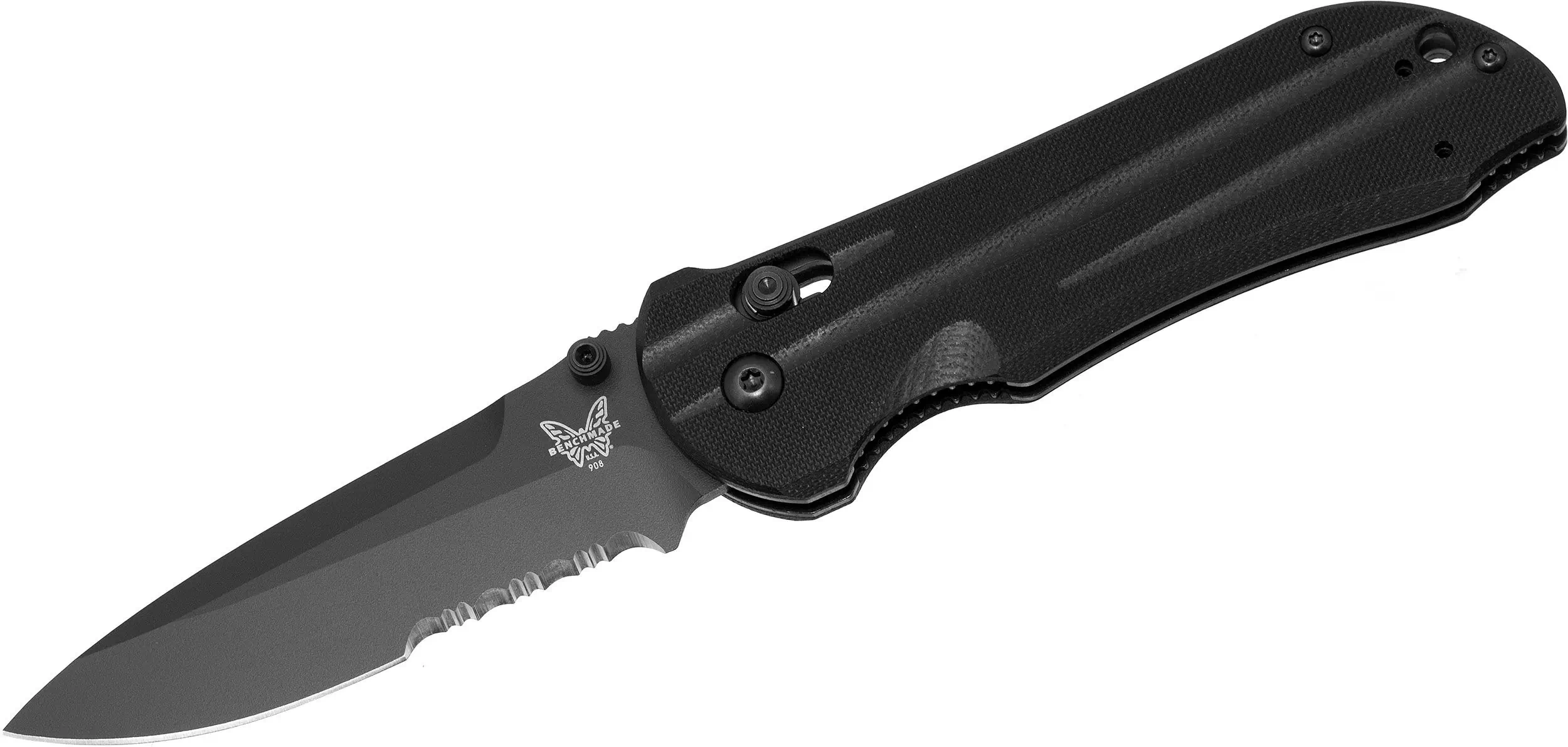



While not powder steel, 154CM is widely used in nicer knives. It’s a good balance between attributes, being relatively hard, tough, and corrosion-resistant. It’s very similar chemically to RWL 34 and ATS-34. If the knife you’re looking at has a 154CM blade, you’re fine.
Note: There is a powder-metal version called CPM154 that’s purer than the non-powder version, making it easier for knifemakers to grind. CPM154 is a truly superior steel.
See more 154CM steel knivesS30V


Crucible produces this American-made powder steel. It developed the steel specifically for knives with the aid of the knife guru Chris Reeve (maker of the vaunted Sebenza, among other gems). Like 154CM, it’s a good compromise between all three steel attributes.
Ten years ago, S30V had a premium price. But as the market has grown and newer steels have come out, it has fallen in price and prestige. I’ve found that most makers harden S30V too much, making it prone to chipping at the edge.
Chris Reeve’s version, which is about two points less hard than others, is quite good. Like 154CM, there is a newer version, S35VN, which shares many of the same attributes as S30V but is easier to craft into a knife thanks to niobium. I’ve found S35VN less chippy even at the same hardness.
Both these steels have excellent performance and can be found on everything from EDC pocket knives to hunting knives.
See more S30V steel knivesS90V
This is a powder-metal steel also produced by Crucible. It’s very hard and exceptionally difficult to sharpen. The benefit of this, of course, is that the steel holds an edge for a very, very long time.
Because of its difficulty in sharpening and machining, it’s very rarely used and comes with a high price premium. Even though it has very high hardness, it’s still decently corrosion-resistant and quite tough. This is one of the better steels on the market.
One excellent knife in S90V is the Benchmade Mini Freek, which also comes in M4.
See more S90V steel knivesS110V
This is also a powder-metal steel produced by American steel company Crucible. Like S90V, it’s a high-hardness steel, but it’s more balanced than S90V.
Spyderco offers this as the high-end steel for many of its evergreen blades, like the Paramilitary 2, Paramilitary 3, Manix 2, and Native 5. A lot of custom makers also like S110V, including the great RJ Martin.
See more S110V steel knivesVG-10
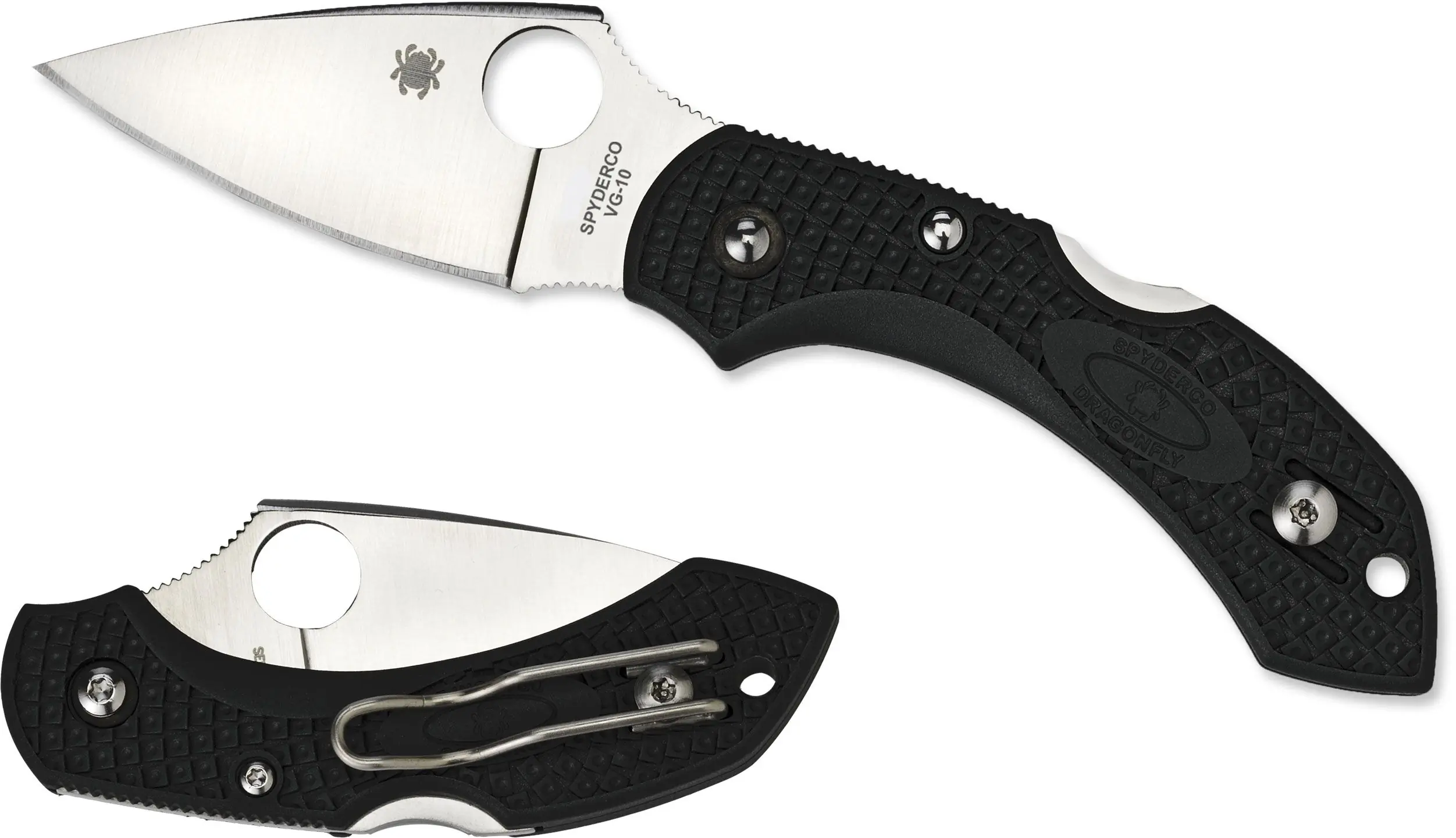



The Spyderco Dragonfly 2 is among many of the company’s VG-10 offerings; (photo/Spyderco)
This is a non-powder Japanese steel used primarily in Spyderco knives. It’s very corrosion-resistant and quite tough. But I’ve found it lacking in hardness, even when compared to cheaper steels like AUS-8.
This is a midprice steel with matching performance. It’s not bad, but you can find better in the market at the same price.
See more VG-10 steel knivesD2
D2 is a tool steel used in industrial settings. Its high hardness and relatively high toughness also make it an excellent choice in cutlery. Though technically not a stainless steel — at least 14% chromium, and D2 usually has 12% — it’s relatively corrosion-resistant.
D2 has been around for more than 20 years, an eternity in metallurgy terms. Different heat treats have emerged over the years, but one has risen to the top as the best: Bob Dozier’s D2. Despite its age, it’s a truly superior steel. There is a powder form, CPM-D2, and PSF27 is also very chemically similar.
See more D2 steel knivesA2
A2 is a tool steel renowned for toughness. But it doesn’t have great wear resistance and thus doesn’t hold an edge particularly well. It’s used for combat knives, bushcraft knives, and other applications where having a super-tough blade trumps the need for edge retention and corrosion resistance.
A2 knives need care taken to avoid rust and are often coated to inhibit corrosion. The brand Bark River uses A2 in many models.
See more A2 steel knivesElmax


European powder-metal steel used in higher-end knives, Elmax has an advanced formula, and the result is very good all-around steel, a generation ahead of formulations like 154CM.
There has been some internet controversy over the grinding and heat treatment of this steel. But in my experience, it has been nothing but great. Only a few years ago, Elmax was pricey. But competition has driven it down to reasonable levels, making it a decent value.
See more Elmax steel knivesCTS-BD1
This is a non-powder steel produced by American steel company Carpenter. BD1 is excellent budget steel, very similar in composition and performance to GIN-1, a Japanese steel used a decade ago by Spyderco. BD1 isn’t terribly hard but sharpens easily. CRKT and Spyderco use BD1.
See more CTS-BD1 steel knivesAEB-L
AEB-L is a non-powder steel produced by Swedish steelmaker Uddeholm. The greatest living knifemaker and one of the greatest knifemakers of all time, Michael Walker, calls AEB-L one of his favorite steels. It gets exceptionally sharp, a nod to its origins as a razorblade steel.
Many custom makers enjoy AEB-L, as it’s easy to machine but still has a high hardness, around 62 HRc. The steel is similar to Sandvik’s 13C26. AEB-L is rarely found on production knives but can be found on custom knives easily. Jesse Jarosz, a custom maker from Montana, regularly uses AEB-L.
See more AEB-L steel knivesNitro V




In nitrogen steels, nitrogen is used as the iron hardener instead of carbon, thus limiting the possibility of rusting. Developed by New Jersey Steel Baron, Nitro V is a non-powder steel marketed as an enhanced version of AEB-L.
Nitro V, as its name indicates, adds nitrogen to AEB-L’s formula to make the steel even more corrosion-resistant. It has enough water-fighting properties that it can be used in marine environments.
Nitro V is also significantly cheaper than many other steels with this level of performance. The Civivi Elementum II, pictured above, is a fantastic value with a Nitro V blade well under $100.
See More Nitro V Steel knives14C28N
European steel company Sandvik produces 14C28N, a non-powder metallurgy steel. It’s an update of its 12C27 and 13C26 steels, which were developed for use in shaving razors.
Most steels use carbon to increase hardness, but 14C28N uses nitrogen, boosting hardness without the normal penalty of increased corrosion. 14C28N is offered on midprice knives and is one of the better steels on a dollar-for-dollar basis.
See more 14C28N steel knivesCTS-XHP
This is a powder steel produced by American steel company Carpenter. When it debuted, Sal Glesser described XHP as a combination of D2’s hardness and 440C’s corrosion resistance.
Time and use have proven this to be quite accurate. XHP is an exceptionally well-balanced steel with excellent all-around attributes. Spyderco and Cold Steel have used it, though Cold Steel recently switched to S35VN due to availability concerns. Despite its wonderful performance, XHP is actually not terribly expensive compared to other high-end, all-around performers.
See more CTS-XHP steel knivesSPY27
A new steel from Crucible, SPY27 launched in 2020 in the Spyderco Native 5 and Para 3. Crucible intends SPY27 to be good all-around knife steel. But unlike most high-end steels, SPY27 is an easily user-serviceable powder steel. This means consumers should be able to maintain these quality knives at home. As of November 2020, this is Spyderco-exclusive steel.
See more SPY27 steel knivesThe Best Knife Steel
The following are some of the best knife steels you can buy. They cost more and are less common, but they’re worth tracking down. They represent the absolute best performers on the market in terms of their specific attributes.
M4
CPM-M4 is a premium knife steel and one of the best all-around performers you can buy. It’s a step up in performance, even from the excellent S35V-level steels on the market.
M4 is very tough, but also has excellent edge retention and is reasonably easy to resharpen. Its only downside is that it is not truly stainless, so it may require a little maintenance to avoid staining and corrosion.
It’s a popular steel in some Spyderco and Benchmade knives, which sometimes finish it with an anti-corrosive finish. It’s a winner where corrosion isn’t a major concern.
MagnaCut
CPM MagnaCut is an outstanding knife steel, and one of the best you can buy for edge retention, corrosion resistance, and hardness. It’s become a go-to steel for premium hunting knives, where long edge-holding is of primary concern.
This relatively new steel came to the market in force in 2021. Since then, dozens of brands have adopted it across many lines, from hunting and EDC knives to — remarkably — saltwater-oriented knives from Spyderco. MagnaCut is one of those steels that is a bit of a unicorn. Much like M4, it thrives in many environments and comes with one downside: price.
MagnaCut knives are rarely cheap. If you find one at a discount, snatch it up!
The Best All-Around: M390, CTS-204P, and CPM-20CV
If you’re looking for an all-around best knife steel, you’d be hard-pressed to find one better than Bohler Uddeholm M390. With a high level of edge retention, corrosion resistance, and toughness, it does most everything quite well.
And while you’ll find it mostly in expensive knives, quite a few approachable M390 blades exist. Check out the GiantMouse Vox/Anso ACE Iona Liner Lock Knife, for example.
See more M390 steel knivesCTS-204P and CPM-20CV are nearly identical steels made by other manufacturers. All three of these steels have chromium, molybdenum, vanadium, and tungsten components and will perform well in myriad tasks.
However, M390, CTS-204P, and CPM-20CV are all pretty difficult to resharpen, so maintain that edge!
The Best Steels for Corrosion Resistance
While most knife steel aims to strike a balance between attributes, some knives aim to specialize. In particular, dive knives or others used in fishing or other saltwater and industrial applications put a premium on corrosion resistance. Here, you’ll find knife steel that is extremely resistant to rust, staining, and corrosion.
H1
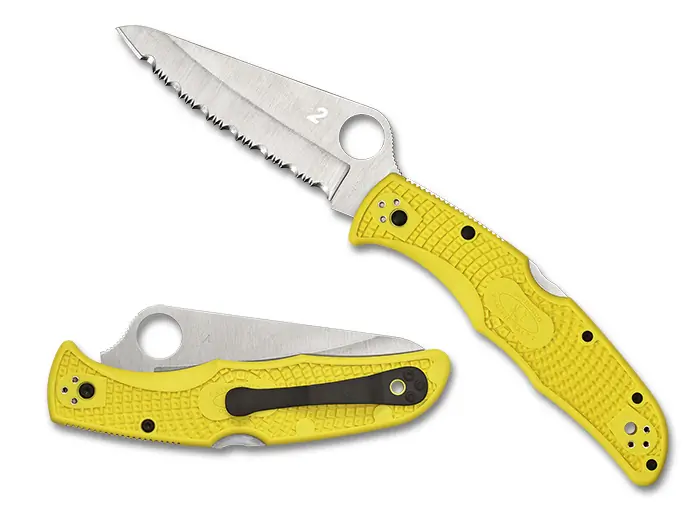



This is a nitrogen steel that is extremely corrosion-resistant — so much so that it’s used in knives designed to go in saltwater. This is one of the most difficult conditions knives are used in. It’s not a particularly great cutter, being poor at retaining an edge. But it’s lightyears ahead of the alternatives, specifically titanium-bladed knives.
See more H1 steel knivesLC 200N
Also known as Z-Finit, Zapp produces this steel in America. It was originally developed for use as ball-bearing steel by NASA. The unique process used to make LC 200N results in a fine-grain structure.
LC 200N is an elite performer, with high hardness, high toughness, and off-the-charts corrosion resistance. This is a virtually stainproof steel suitable for all sorts of aquatic environments.
Spyderco is the only production company using this steel, though Michael Gavik of Gavko Knives produced a number of customs in LC 200N.
See more LC 200N steel knivesThe Toughest Knife Steels
CPM3V


This is an American-made powder steel. It’s exceedingly tough and relatively hard, but it’s not stainless. In my experience, it will tarnish and discolor quickly. But in use, I’ve found nothing that withstands the abuse that 3V can take.
Hammering through hickory, digging at roots in sandy soil, and cutting around bone did nothing to chip, dent, or roll the edge of my 3V knives. If you need something that soaks up abuse, try 3V.
See more CPM3V steel knivesINFI
A proprietary steel and heat treat developed by Busse Knives, INFI is an excellent performer and one of the best steels for big choppers on the market. Though technically not a stainless steel due to its composition, in use it performs exactly like one.
INFI is also quite hard and sharpens easily. But the true calling card of INFI is its insane toughness. Short of purposeful abuse, it’s all but impossible to chip an edge on an INFI blade.
See more INFI steel knivesThe Hardest Knife Steels
ZDP-189
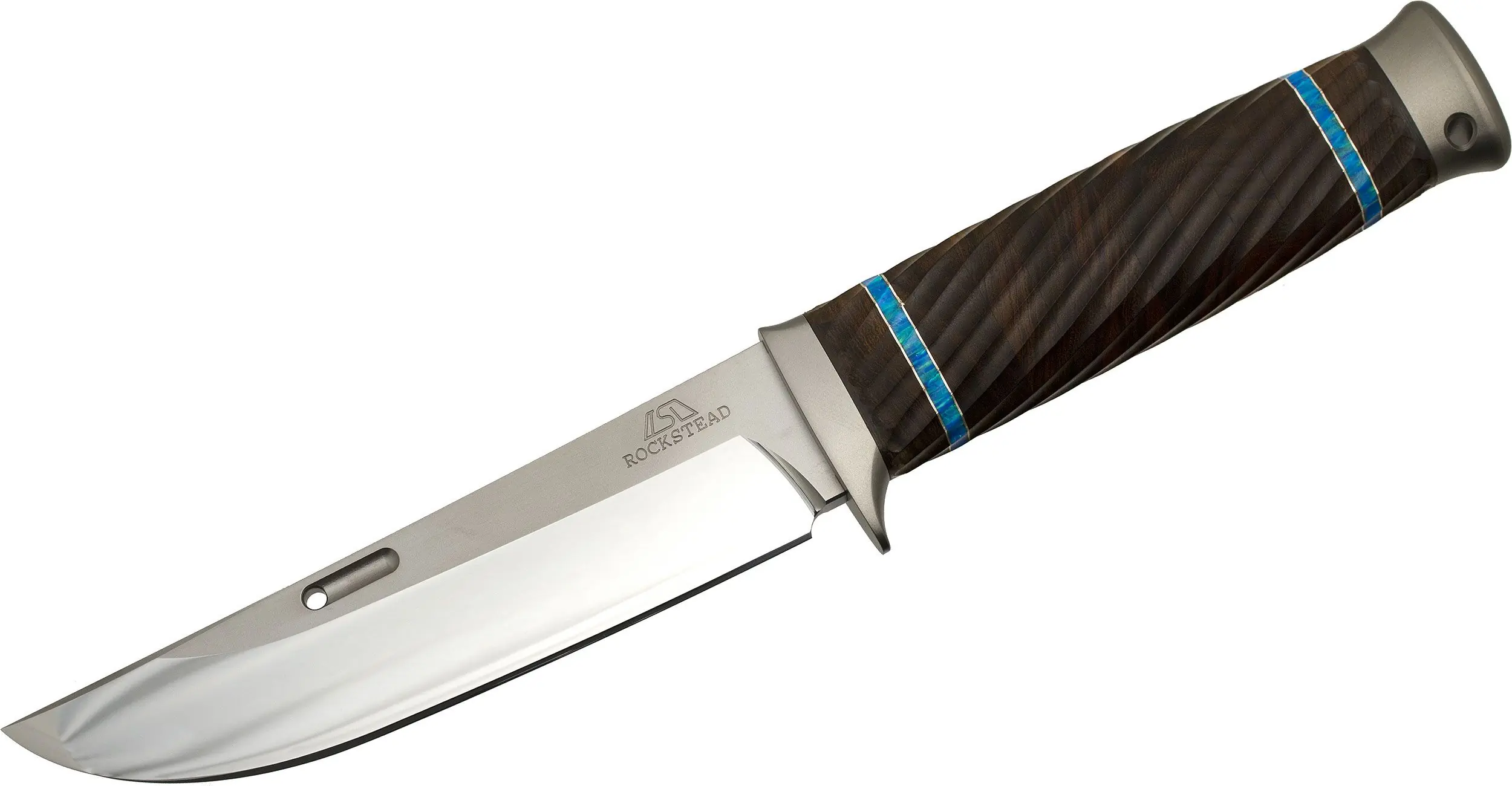



A Japanese powder steel, ZDP-189 is essentially the polar opposite of 3V — it’s uber-hard instead of uber-tough. Thanks to its very high hardness (64-66 HRc compared to the average of 58-62 HRc), ZDP-189 can be ground thinner and sharpened less often.
This makes for a great slicing knife and a perfect steel, in my opinion, for a regular-use, everyday-carry folder. ZDP-189 can tarnish, though not as easily as 3V.
It also happens to used in very expensive knives, such as Rockstead pictured above.
See more ZDP-189 steel knivesMaxamet
Carpenter produces this powder steel. Maxamet is one of two current high-hardness kings, with HRc marks in the high 60s approaching 70, a hardness usually only seen in carbide steels. Maxamet’s hardness results in incredible edge retention and a nightmarish sharpening and machining experience.
Furthermore, because of its ultrahigh hardness, Maxamet is very prone to corrosion, probably worse than 1095. It’s so high in hardness that Maxamet knives usually ship with desiccating packages. Spyderco has produced several production knives with Maxamet, and the steel debuted on the ZT0888.
See more Maxamet steel knivesREX 121
REX 121 is a powder steel produced by Crucible. The brand designed it as a carbide replacement. It has an HRc over 70, usually even harder than Maxamet.
The high hardness makes it all but impossible to sharpen and machine. As a result, there are no production knives with REX 121 steel, though Ferrum Forge used the steel early on in its custom knives and a Kickstarter knife from the Creely Brothers. Because of its abrasion-eating hardness, knives with REX 121 come at an exceptionally high price.
Learn more About REX 121 steel knivesOne of a Kind: Sintered Titanium-Ceramic Alloy
The Vargo Sobata 398 is unlike any other knife on this list. It boasts an incredible ability to continue cutting long after it seems “dull.” And it’s not made of steel. Instead, Vargo titanium uses a unique material called sintered titanium-ceramic alloy.
While quite soft, the metal cuts even when it seems dull because, at the microscopic level, it has a roughness that performs much like a serration. It’s an anomaly in the knife world and quite puzzling to use.
But we’ve tested this metal in the form of the Sobata 398 for nearly a year and have been continually impressed. Read our full Sobata 398 review.
The Best All-Around Knife Steel: SM100


The old rule in steels used to be “corrosion resistance, toughness, or hardness — choose two.” But SM100 (the trade name for Nitinol 60) threw that out the window when introduced to the cutlery world. It’s very hard, tough, and corrosion-resistant. It’s called memory metal because heat can get it to revert back to a previous shape.
In fact, it’s not technically a steel at all, as it uses titanium and nickel. Steel is a combination of iron and carbon with other elements. But SM100 is not widely available, is hard to heat treat and grind, and is exceptionally expensive.
No mainstream companies use SM100, and the niche makers that do usually charge more than $1,000 for knives with SM100 blades. But if you want the coolest blade material for a whole lot of money, SM100 is it.
Learn more About SM100 steel knivesFAQ
What is the best steel to use in a knife?
There is no single best knife steel, instead, there are many pros and cons to consider when choosing a knife steel for a specific task. This article outlines dozens of excellent knife steels and their best uses.
1095 is a good, albeit dated, knife steel. It is easy to resharpen and is relatively tough, making it popular for bushcraft knives. However, it is prone to corrosion.
AEB-L steel makes exceptionally sharp knives and has historically been used in razor blades.
Maximet is an incredibly hard steel with exceptional edge retention. But while it has incredible edge retention, it has less toughness and corrosion resistance than many other steels.
Both D2 and “stainless steel” resist rust and staining. But D2 has better hardness and edge retention than many stainless steels. It is not as corrosion-resistant as some steels with higher chromium content.
